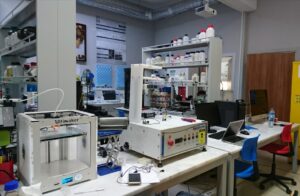Assoc. Prof. Demirci, who emphasized that their methods allow precise control over droplet size and cell count during printing, stated that this breakthrough could revolutionize stem cell production and address challenges in organ transplantation. Turkish scientists continue to achieve global recognition with groundbreaking work. Known for his significant contributions, Assoc. Prof. Dr. Utkan Demirci is preparing to achieve yet another milestone. Numerous initiatives have been made to advance the use of stem cells in medicine. Speaking to Med-Index’s Esra Öz about his work, Demirci shared details about using human embryonic stem cells in 3D printing for the first time:
“It is possible to print cells as droplets using a 3D printer. When you suspend these droplets, it’s referred to as the ‘hanging drop method.’ Subsequently, the cells start merging and dividing, forming a 3D cluster. The term ‘3D’ originates from this process. With this advanced technique we previously introduced in the field of bioprinting, we have successfully developed bionic stem cells.
In this droplet printing containing human embryonic stem cells, we can control both the droplet size and the number of cells within each droplet. This level of control enables us to print highly regulated cells onto surfaces, leading to reproducible embryonic stem cell fusion. This automated system allows the creation of three-dimensional structures, which can be replicated in the same size and volume layer by layer. This is critical because if we are seeking a scientific answer, it’s essential to ensure that our experiments are not influenced by size variations or human factors. Control in this process is key.”






Add comment
Yorum yapabilmek için oturum açmalısınız.